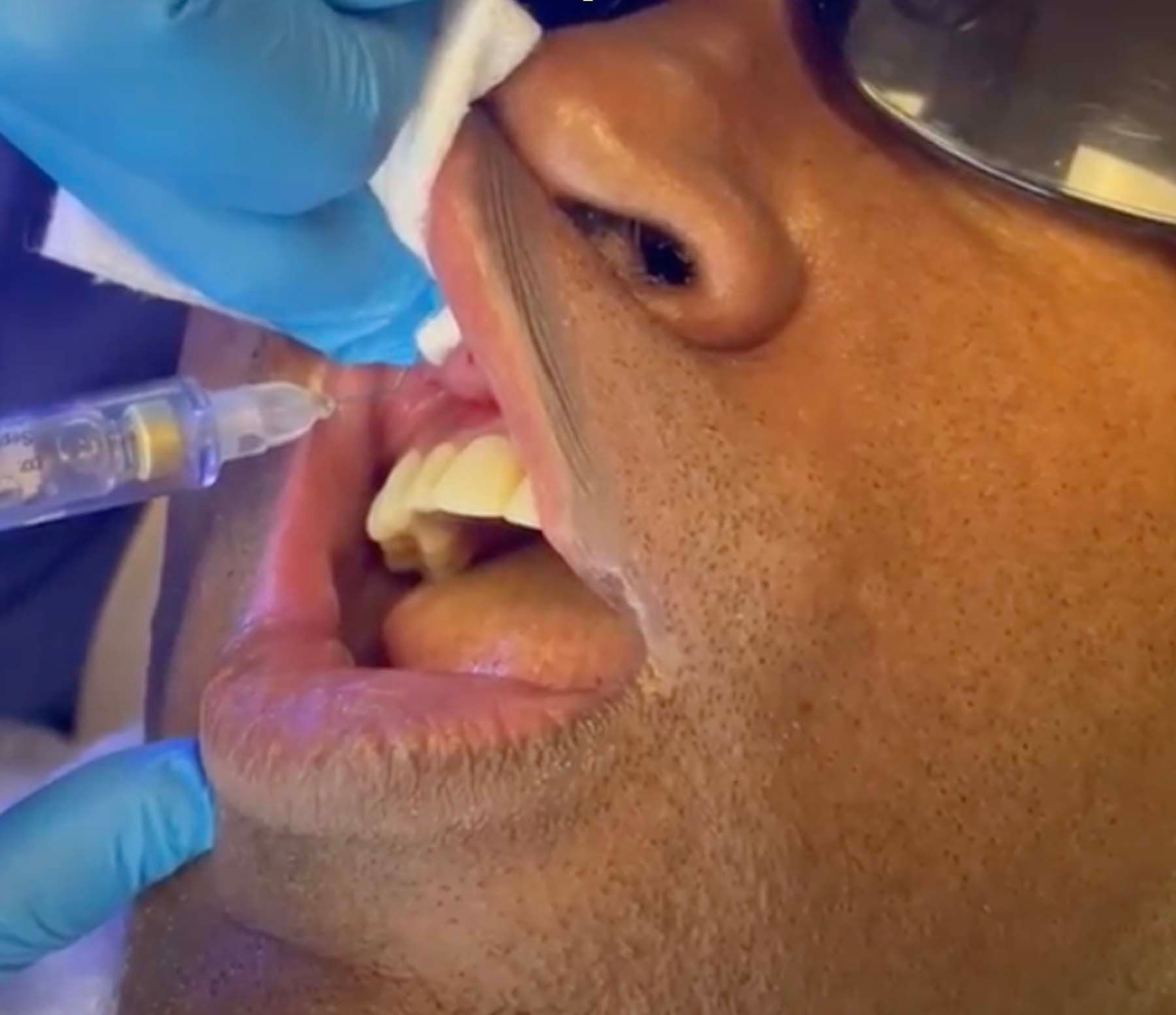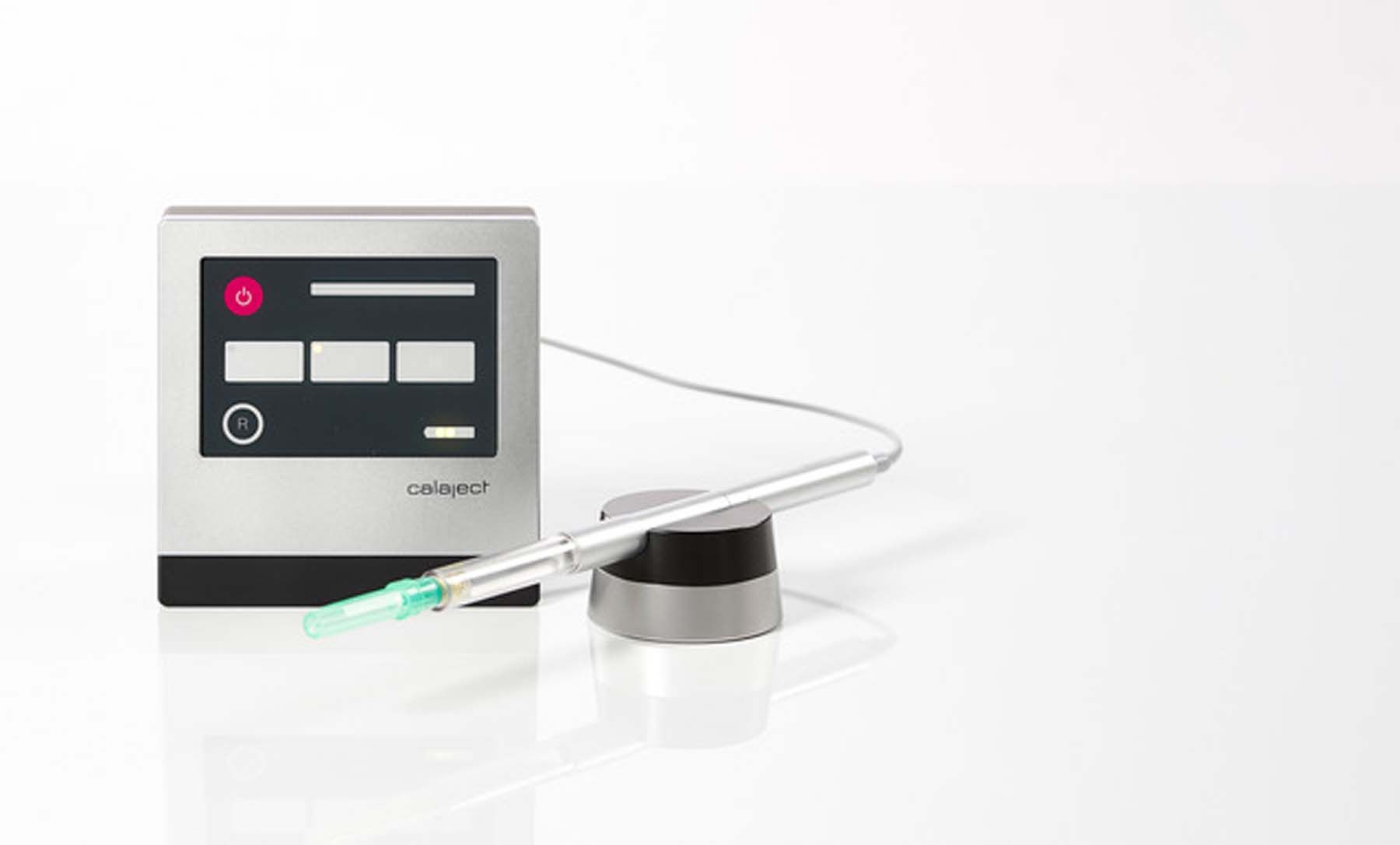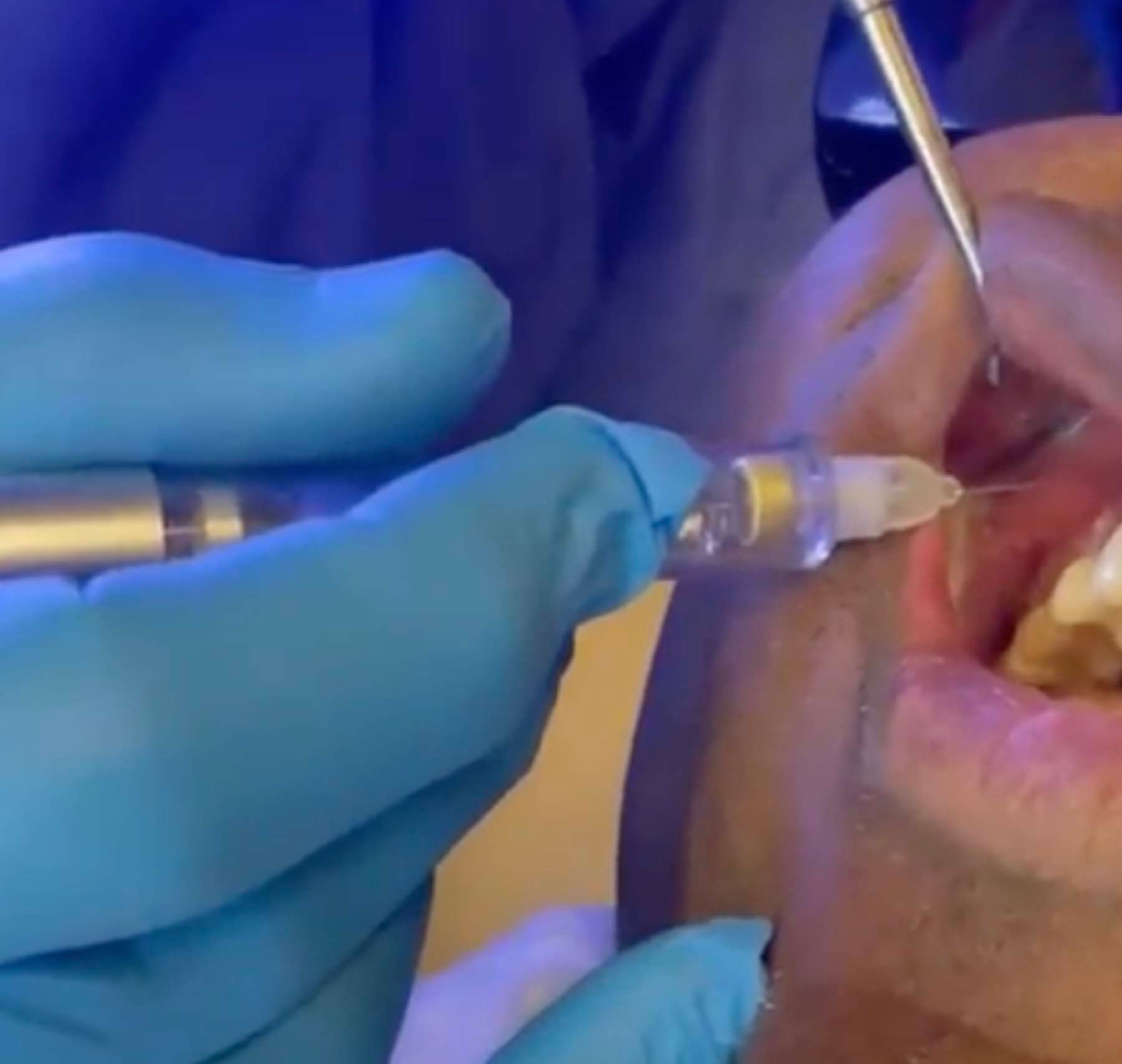From a patient’s perspective, there are very few characteristics of a dental professional that really matter: Is the dentist kind? Is the dentist patient? Does the dental work last? Is the shot painful?
Administering local anesthesia—giving the shot—can often be one of the most nerve-wracking elements of being a dentist, especially when patients often have no other way to judge the quality of dental work they have received. All they can really surmise about the quality of their clinician is whether getting a shot hurts or doesn’t hurt. Despite our efforts as dental professionals to follow all the rules of local anesthesia, the results are sadly inconsistent. Some patients may find that the technique in delivering local anesthesia is fabulous and they don’t feel a thing, while others may find the exact same technique very painful.
Along with clinical expertise, there are a variety of factors that may affect the patient’s perception: (1) injection into a muscle attachment, (2) speed of injection, (3) patient’s pain tolerance, and (4) patient’s preconceived notions
Innovation in the field of local anesthesia has been slow, inconsistent, and not well adopted. Our needles, syringes, and types of anesthetic solutions today are not much different from those same things from decades ago. Often, we find ourselves telling our patients that we wish there were a better way to administer anesthesia without all the pain, fear, unpredictability, and discomfort associated with it and are stymied when patients inquire about our ability to “do it better than their previous dentist.”
Calaject
Calaject helps clinicians deliver pain-free injections. The system controls the flow rate, which ensures smooth, gentle flow of anesthesia. Even palatal injections can be carried out with less discomfort for the patient. The light pen grip provides a relaxed working position and good finger support shows where the needle can be kept perfectly still in situ. The unit’s touchscreen displays actual injection pressure. The acoustic signal indicates the flow rate, and the unit is operated by a separate foot controller. The vibration-free handpiece allows clinicians to maintain visual contact with the cartridge during the entire injection.
Directa USA
800-537-8765
directausa.com
Directa, an industry leader in the innovation of local anesthesia techniques, has developed Calaject, a computer-assisted local anesthesia delivery system for everyday use. The system controls the flow rate of anesthesia delivery, thereby ensuring that the patient receives a standardized quality of injection at every appointment. The computer settings are customized based on the location of the injection so the speed of anesthetic expression is modulated to ensure minimal tissue distention and its resulting sting.
Overall expression of anesthetic, along with requisite aspiration to avoid arterial infiltration, is conveniently controlled with a foot pedal. The machine has a convenient pen grip so that the needle can be kept still. Not only does this benefit the patient but it also allows the operator to stand in an ergonomically correct position (Figures 1 and 2).
During the evaluation period, I had several unique opportunities to try the Calaject on patients who otherwise would have dreaded the local anesthesia process. One instance stands out in my mind. I needed to perform several anterior maxillary restorations, necessitating local anesthesia directly under the nose. This is a procedure that I generally hate performing as it is difficult to do without causing discomfort, even when I attempt to employ the gentlest practice. I had to give several injections in that area. My first notable experience was the pen grip, which I found simply more ergonomically friendly for my hands. The most significant and memorable experience, however, was the surprising lack of response from this otherwise extremely jittery and anxious individual. The controlled slow flow from the delivery unit allowed for this, and both the patient and I were quite grateful.
The Calaject was given to the Catapult Education product review board, a group of dentists with a variety of backgrounds and clinical environments. They were asked to rate their experience with this highly innovative, computer-aided product with regard to the following criteria:
- Ergonomic stress with Calaject compared to manual injection
- Level of patient discomfort
- Operator benefit
- Type of injection Calaject is best suited for
- Cost-effectiveness
- Overall ergonomic design
- Anesthesia flow rate
A majority of the respondents to the survey were very satisfied with Calaject and saw the addition of a computer-assisted local anesthesia delivery as a benefit to their practice. Respondents found it had a very favorable design with an ergonomic handpiece, an auditory signal and a visual display for the flow rate, and a self-aspirating feature with the foot pedal. Overall, the respondents found the machine and its components to be cost-effective. It was noted that because of the slower flow rate, operators were able to start procedures immediately after administration. Most importantly, the patient did not report any pain during the injection.
Some of the comments are shared below:
- “This is a winner.”
- “Calaject offers precise control over anesthetic dosing, effectively reducing patient discomfort and minimizing injection errors. Additionally, the beeping feature of Calaject gives patients a perception that dentistry is akin to medicine, which may encourage them to take their oral health more seriously.”
- “It’s essential to understand the correlation between flow rate and patient discomfort. The slower flow rate is designed to minimize discomfort, which can significantly enhance the patient experience.”
- “Given the benefits and advanced technology of Calaject, I advocate for its immediate incorporation into dental and dental hygiene educational programs. Introducing this tool early in a student’s training can familiarize them with its use and benefits, including precise control over anesthetic dosing, reduced patient discomfort, and minimized injection errors. Furthermore, early exposure to such advanced technologies could foster a mindset that prioritizes patient comfort and the overall patient experience, which is crucial in modern dental practice.”
- “It is a very nice looking unit. Patients said they felt no discomfort at all.”
There were a few negative responses, summarized below:
Respondents reported disadvantages when the patient moves, for instance, in a pediatric office, and that the flow rate can be too slow for pediatric patients.
Despite these unfavorable characteristics, the resounding majority of responses were highly positive, with almost every respondent mentioning that they would recommend this product to a colleague. For these reasons, the Catapult Education product review board proudly awarded Calaject with the Catapult Vote of Confidence™.



